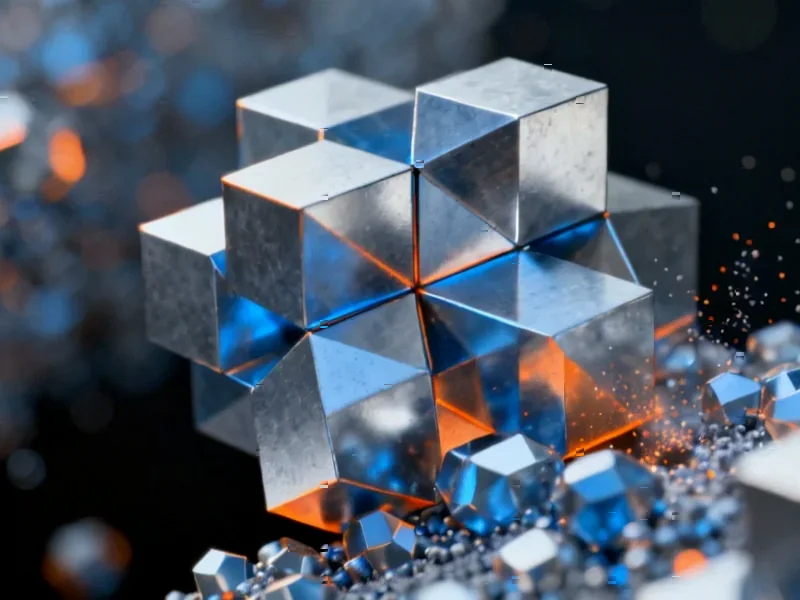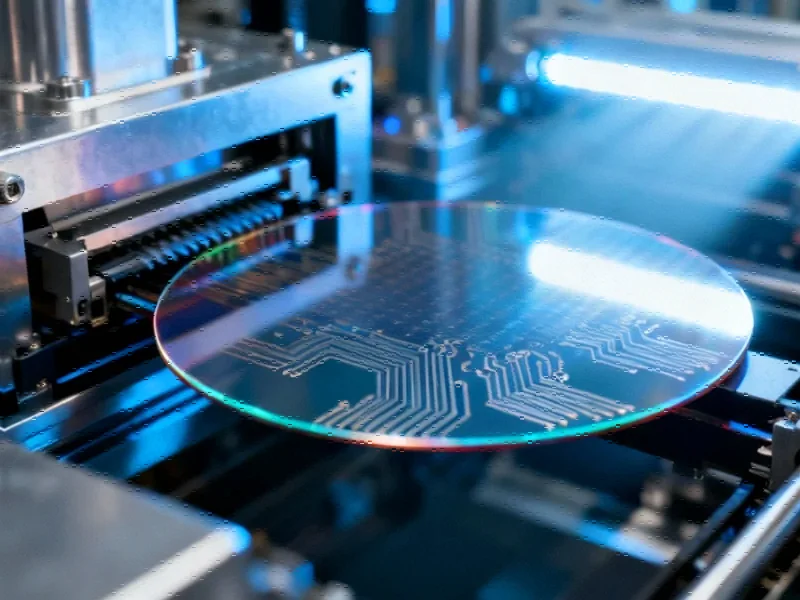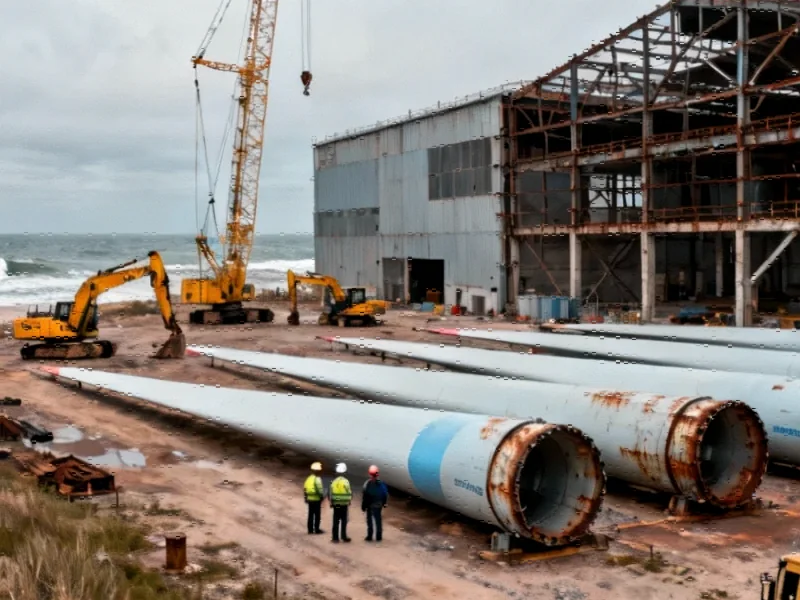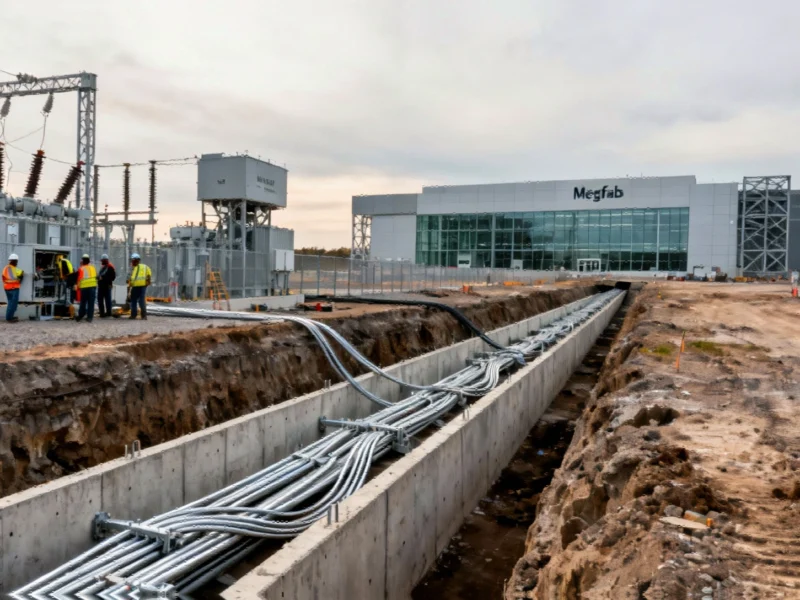Structural Design Impacts Titanium Ion Release in Medical Implants
Recent research published in Scientific Reports reveals that the structural design of 3D-printed titanium orthopedic implants significantly influences their corrosion behavior and metal ion release patterns. According to the study, lattice structures commonly used in implant design to promote bone integration demonstrate substantially higher titanium dissolution rates compared to solid regions, potentially affecting long-term implant performance and patient safety.
Table of Contents
- Structural Design Impacts Titanium Ion Release in Medical Implants
- Simulation Methodology Reveals Critical Patterns
- Experimental Setup and Testing Conditions
- Clinical Implications and Metallosis Concerns
- Anatomical Variations in Dissolution Behavior
- Microstructural Factors Influencing Corrosion
- Surface Area Considerations
- Design Optimization Recommendations
Simulation Methodology Reveals Critical Patterns
Researchers reportedly employed finite element analysis (FEA) simulations to evaluate titanium ion dissolution across different implant designs, including solid, hybrid, and lattice structures. Sources indicate the team used two-dimensional cross-sectional slices extracted from 3D implant geometry to reduce computational complexity while maintaining analytical relevance. The simulation approach enabled meaningful comparison of corrosion susceptibility across anatomical regions and provided insight into how implant design influences localized Ti ion release patterns within clinically relevant 3D structures.
Analysts suggest this methodological approach was particularly valuable because, according to the report, solid or lattice surfaces do not allow dissolution to occur perpendicular to the plane outside the boundary layer, making 2D simulations sufficient to represent real-world dissolution tendencies in those regions.
Experimental Setup and Testing Conditions
The investigation involved three types of Ti6Al4V specimens—solid, hybrid, and lattice—fabricated to assess how structural design influences Ti ion release. These specimens were immersed in both ultrapure water and Hartmann’s solution, with the latter chosen to simulate physiological ionic conditions relevant to the in vivo environment. The 7-day dissolution behavior was analyzed using FEA, which visualized the diffusion profiles of Ti ions around the lattice structure., according to related news
According to reports, the simulation results demonstrated clear trends: in ultrapure water, solid structures exhibited the lowest dissolution amount (concentration of 1.83 µg/L), followed by hybrid (2.04 µg/L) and lattice structures (2.38 µg/L). In Hartmann’s solution, which more closely mimics bodily fluids, the dissolution trend by structure design difference was more distinct, with solid structures exhibiting dissolution amount of 82.8 µg/L, hybrid 90.5 µg/L, and lattice structures 128 µg/L.
Clinical Implications and Metallosis Concerns
The research highlights important clinical implications, particularly regarding metallosis—a complication in which metal is deposited in surrounding soft tissue after metal implantation. Sources indicate that in revisional surgery after 18 months from initial implantation, metal deposition was observed in the soft tissue around 3D implants even in areas where there was no friction between metals.
Analysts suggest that corrosion is mainly induced by the interaction of Ti in the implant and Cl in the blood, with Ti ions eluting from defects where the protective oxide film on the implant surface is destroyed. The report states that in situations using as-built 3D-printed metal implants with rough or porous surfaces, metallosis can be accelerated without friction between metals.
Anatomical Variations in Dissolution Behavior
Researchers extended their analysis to patient-specific pelvic and tibial implants reconstructed based on actual clinical implants. According to the findings, for the pelvic implant, vertical cross-sectional analysis revealed that at cross-section S3, the concentration at monitoring points near lattice regions after 7 days reached approximately 143.77 µg/L, whereas points near solid regions showed only 81.94 µg/L—indicating nearly a 75% increase near the lattice zone.
Similar patterns were observed in tibial implant simulations, where monitoring points located near lattice regions showed a steeper increase over time and reached higher concentrations than those positioned near solid structures. The report states that across all cases, higher lattice volume fractions led to greater Ti ion release, while the spatial pattern of dissolution varied depending on implant geometry and the orientation of the cross-sectional slice.
Microstructural Factors Influencing Corrosion
Microstructural analysis revealed significant differences between lattice and solid regions that contribute to varying corrosion behaviors. According to researchers, the lattice region exhibits a diverse grain orientation due to complex thermal gradients and rapid cooling rates during laser powder bed fusion (L-PBF) processing, whereas the solid region shows a more homogeneous texture.
Phase distribution analysis demonstrated a higher prevalence of the β phase within the lattice and boundary regions, while the solid region primarily exhibits the α phase structure. Sources indicate this phase distribution suggests that lattice regions contain a higher fraction of retained β phase due to the rapid cooling rates associated with L-PBF processing, which may contribute to different electrochemical behaviors and corrosion susceptibilities.
Surface Area Considerations
The research highlights the critical role of surface area in dissolution behavior. According to the report, specific surface areas of original 3D designs were 0.68, 1.71, 3.48 and 19 cm²/g for solid, hybrid, MUTARS, and lattice structures respectively. However, the hybrid and lattice structures of actual fabricated parts exhibited higher specific surface areas of 5.29 and 32 cm²/g respectively.
Analysts suggest these increases in surface area after the L-PBF process can originate from the existence of partially unmelted powder around lattice structure, creating additional sites for corrosion initiation. The Ti concentration increased with the expanding contact surface area between the specimens and solution, with approximately 50 times more dissolution observed in Hartmann’s solution compared with ultrapure water.
Design Optimization Recommendations
The findings emphasize the importance of lattice design optimization in 3D-printed implants to balance mechanical stability and corrosion resistance. According to researchers, the non-uniform distribution of Ti ions in simulated results can be attributed to both structural and microstructural heterogeneity. Lattice regions provide a significantly larger exposed surface area, leading to greater localized dissolution, while the galvanic coupling between α and β phases further accelerates corrosion in specific regions.
Sources indicate that these comprehensive analyses provide crucial insights for orthopedic implant designers, suggesting that careful consideration of lattice density, distribution, and microstructural characteristics could help minimize metal ion release while maintaining the benefits of porous structures for bone integration.
Related Articles You May Find Interesting
- Apple Set to Reveal Q4 2025 Earnings Amid Strong Wall Street Projections
- Albania Appoints AI as Minister in Groundbreaking Governance Experiment
- Samsung Galaxy S26 Series May See Launch Window Shift, Reports Suggest
- Breakthrough Gemini Surfactant Research Reveals Enhanced Performance for Industr
- South Korea’s Corporate Governance Overhaul Sparks Market Transformation
References
- http://en.wikipedia.org/wiki/Specific_surface_area
- http://en.wikipedia.org/wiki/Ringer’s_lactate_solution
- http://en.wikipedia.org/wiki/Cross_section_(geometry)
- http://en.wikipedia.org/wiki/Ultrapure_water
- http://en.wikipedia.org/wiki/Surface_area
This article aggregates information from publicly available sources. All trademarks and copyrights belong to their respective owners.
Note: Featured image is for illustrative purposes only and does not represent any specific product, service, or entity mentioned in this article.



